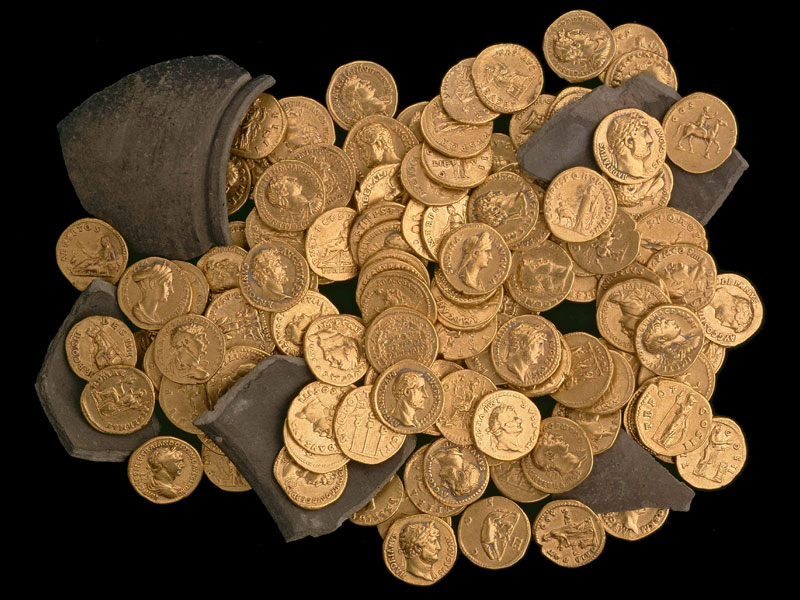A project set up to collect and digitise information about coin hoards of the Roman Empire has been extended for a further five years, thanks to renewed support from the Augustus Foundation.
The Coin Hoards of the Roman Empire (CHRE) project was established in 2013 to fill a major gap in the digital coverage of coin hoards from antiquity. Its aim is to document hoards of all coinages in use across the empire between 30 BC and AD 400, making this information freely available online for the benefit of the general public and the wider research community.

With over 12,000 hoards containing more than 3.5 million coins already recorded, CHRE has the potential to significantly enhance our understanding of the Roman economy.
The foundation's gift will enable the project team to continue their important work until 2023. As well as completing summary descriptions of hoards for all remaining countries, the team will now embark upon the daunting task of systematically recording details of the individual coins, thereby dramatically increasing the usefulness of the data. The scope of the project will also be extended to include Roman hoards from outside the empire.
CHRE is a joint initiative of the Ashmolean Museum and the Oxford Roman Economy Project. Chris Howgego, co-director of the project, says: 'Research projects that require more than five years pose a significant challenge in the current funding environment. The inspiration and continued support of Baron Lorne Thyssen-Bornemisza through the Augustus Foundation, is a wonderful example of how private generosity can help us to address this glaring need for sustained work on a major international project of enduring academic value and public utility.'
In the years since its launch, CHRE has amassed a significant network of international collaborators, including museums, libraries, antiquities authorities, national finds schemes, national banks and numismatic societies, as well as universities, academies, institutes and commissions. A total of 14 graduate students from seven countries have already been involved with, and contributed to, the project.